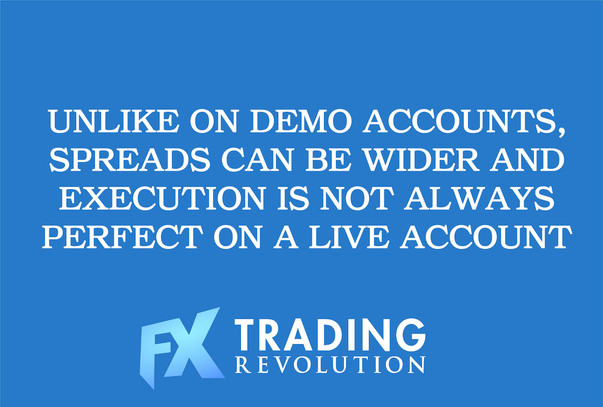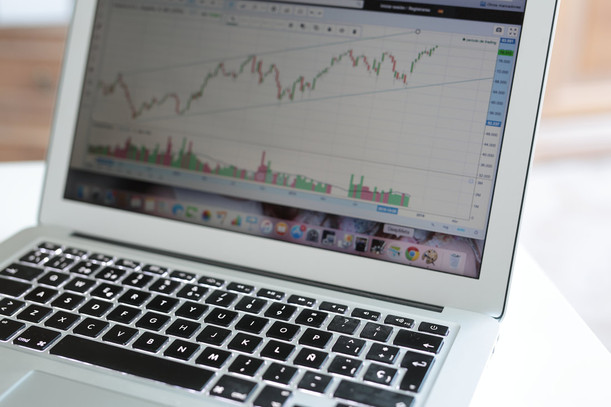It is often recommended to practice on a demo account when starting in Forex trading until you master all the necessary concepts and nuances about the art of trading.
And indeed, demo trading and live trading are not that different – meaning you can literally learn everything you need to be profitable on a demo account just fine.
Still, despite all efforts to make demo trading as real looking and as real-feel as possible, there are some key differences that must be addressed before anyone upgrades from demo to live trading.
There is nothing huge or hard to overcome but it’s tremendously important to be aware of these differences and take them into account when making plans and setting goals.
In essence, there are two key aspects that are different and practically make it more difficult to achieve Forex trading success.
One of them is 100 percent related to the trader himself and unaffected by anything else, and the other has to do with the broker and the quality of service it provides.
So let’s get into it.
Psychological Aspect
You’ve probably heard that “trading psychology” is one of the biggest factors that makes the distinction between success and failure in the Forex trading field.
Indeed it is, which is why it is also the biggest difference between trading demo and live. And unless you are a robot, in all probability you will be affected by it when making the switch.
The reasons?
Obvious. On a demo account you don’t have your money at stake, so it’s much easier to think clearly and remain rational and unemotional. It’s simple, because you feel no or little emotion when you are scoring losing trades.
However, when you go live, everything changes. At least for most people.

While yes, getting over psychological roadblocks and training yourself to remain rational and unemotional is definitely possible, taking that step from demo to live for the first time, is in most cases experiencing a whole new level.
One useful thing to do to help you transition this period is to give yourself time to practice on a live account as well. Start with a smaller amount that you are comfortable with and practice on it for a while similar to as you would on a demo account (this serves another purpose as well that we will talk about in the next section - namely to test your broker).
For a perspective on how important trading psychology is over the long term, here are some of the risks of not managing your trading psychology correctly:
- Being overconfident in a trade setup or a trading system because it worked on a demo account - potentially causing large losses on real account.
- Expecting massive profits as on the demo account while in reality, market conditions change constantly and what worked previously may completely fail today.
- Not following the trading plan because of rash emotional decisions. For example, taking a trade in the heat of the moment (like during a news release) is the obvious scenario and it should be avoided.
- Trading psychology can also affect you by stopping you from engaging in positive behaviors such not taking a trade on a good setup because of fear of losing.
- Overanalyzing which in the end is rarely beneficial and can often do more harm than good.
Orders Execution and Trading Platform Reliability
The other aspect that can be very different on a live account is “trade execution”. This goes to the basics about choosing a broker and your best bet here is to choose a high quality, reputable and regulated broker. Anything less is just asking for trouble, and trust me, troubles will start with a bad broker as soon as you start winning more consistently.
However, even with a good broker, spreads are often tighter on demo accounts and execution is always perfect compared to their live accounts.
For example, if the spreads are variable they will not be widened by big amounts as in the live accounts. One common situation is during volatile news releases where everything can work fine on a demo account but once you make the switch to a live account all kinds of problems start to appear.
Trade execution is not something to be underestimated and should be taken seriously.
While on a demo account you will always get filled at the requested price, things start to change on a live account.
And that is understandable to some degree as this is hard to be replicated when you are trading with virtual funds and you are not part of the real market.

However, big differences between requested and filled prices on a live account are a red flag. A few pips stolen from you on every trade add up to a lot after 100, 200 or 1000 trades. And that is without adding the stop hunting and platform freezes that are common with unethical bad brokers.
This is why it’s so important to test the broker with a live account in addition to the demo test. As we said in the previous section, you can deposit a small amount of money to test the platform, spreads and execution speeds before making the full deposit.
For example, if you intend to invest 5,000 USD, you can first start with $200 or $500 to test things out and then if everything is ok you can add the remaining funds.
In the end, it’s always best to go for an ECN broker whenever possible as they offer the best trade execution with the lowest spreads.
And while live trading and demo trading can never be the same it’s crucial to be aware of the two key differences that we discussed here and address them appropriately right from the start which will make it easier to improve in the future.





